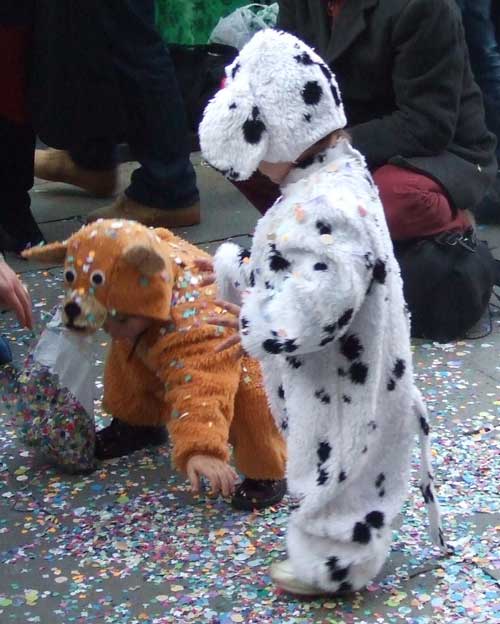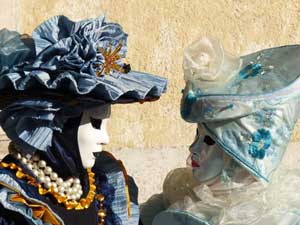Venice’s Carnival (Carnevale) takes place in February, in the days leading up to Shrove Tuesday. It used to last ten days but now in order to extend this high-earning tourist season, events often start the weekend before that.
About Carnevale
Carnival, or Carnevale, has been celebrated for centuries throughout Italy. The name derives from the words carne vale – ‘farewell to meat’ – which explain the function of the celebration: an opportunity to indulge and use up such treats before the start of Lent (like an extended Pancake Day).
In modern Italy Carnevale is generally a time for children, who are led, carried and wheeled around town dressed in costumes – from cute fluffy animal suits to musketeers and Harry Potters, leaving a trail of confetti, sweets and ‘silly string’ littering streets and piazzas. Sometimes the celebrations extend to organised events for the whole community, but on the whole it’s not a very important time for adults.
In Venice, however, the tourist board and hoteliers hit upon a fantastic money-earner in the 1980s when they revived a picturesque version of Venice’s past. In Venice it’s the grown-ups who have most of the fun, with masked balls, costume parades and a rather sanitised nostalgia for more decadent times.
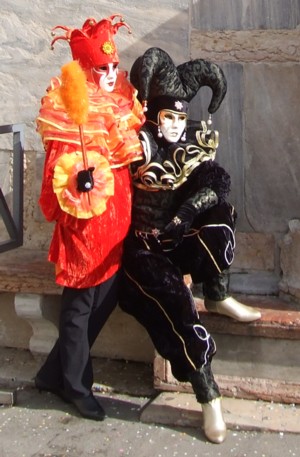
Carnival in Venice
However much the modern Carnival may be contrived for tourists, it’s undeniably atmospheric to walk down a lane in Venice and pass cloaked and masked figures. The tourist board and hotels urge their guests to participate by wearing at least a mask as they tour the town. If you have a secret yearning to stride around in a cape and tricorne hat, this is a perfect opportunity.
Carnival in Venice can be an exciting time for children, as long as the dehumanising masks don’t scare them, and there are plenty of opportunities for fun. Young and old can admire the spectacle and select their favourite costumed characters, and there are plenty of opportunities to photograph your loved ones alongside dramatically-costumed carnival-goers. The city is very busy, particularly during the two Carnival weekends, and there is a genuinely festive atmosphere.
The Carnival is a very big business opportunity for Venice, and a consortium has been set up to maximise the potential for tourist revenue. There are lots of events scheduled all around Venice, with a programme available online and from the tourist information offices.
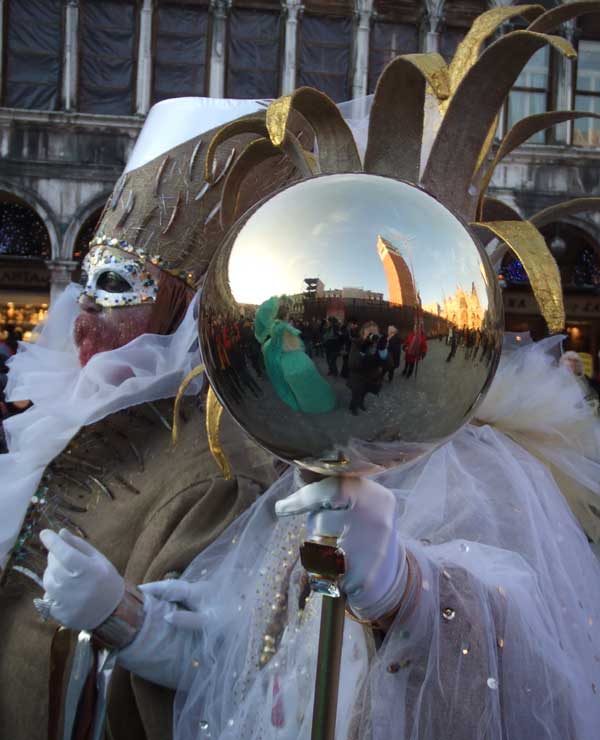
Free entertainment and public shows
Throughout the Carnival period there is plenty of entertainment to be had around St. Mark’s Square and the adjacent Piazzetta. A programme of events takes place in the Piazza, open to everyone. A schedule is available online and displayed on notices around the square (or pick up a calendar at the tourist office). Apart from the organised events, there is a lot of fun to be had costume-spotting. Costumed characters parade and preen throughout the day, happily posing for armies of photographers. Some are in greater demand than others; after half-an-hour’s wandering you’ll probably have your own favourites.
To add to the festival atmosphere, there are usually refreshment stalls in the Piazza selling snacks and drinks like mulled wine, Bellini cocktails and the local speciality fritelle, a popular festive doughnut sold everywhere in Venice around Carnival time. For some of us, fritelle are one of the very best things about this time of year.
The grand opening celebration of the Carnival takes place on the first Sunday, with an event called il volo dell’angelo (the flight of the angel). This adaptation of an old tradition involves an ‘angel’, often notable for the randomness of choice: past years have featured a swimming champion, the rapper Coolio, a minor socialite and Venetian carnival participants swinging on harnesses from the belltower into the Piazzetta San Marco.
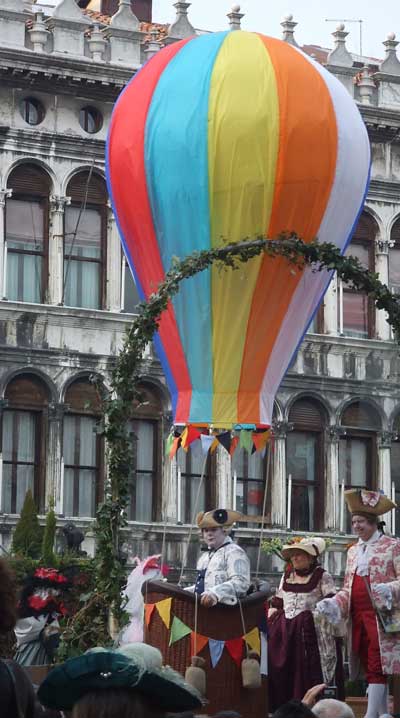
One of the biggest events is the afternoon parade of costumes on a catwalk in St. Mark’s Square. If your costume is fabulous and you’re feeling confident, then you can join in. I’ve seen participants from England, San Francisco, Brazil, France, Germany and all parts of Italy. The festival ends with a big celebration and fireworks above St. Mark’s.
Masked balls and special events
There are a number of special events and balls held in Venice during the Carnival. Tickets are generally expensive and should be booked in advance, but if you’ve left it late, it’s still worth calling around. Venice’s opera house, La Fenice, is sometimes among the hosts, and some of the smarter hotels also put on balls and parties.
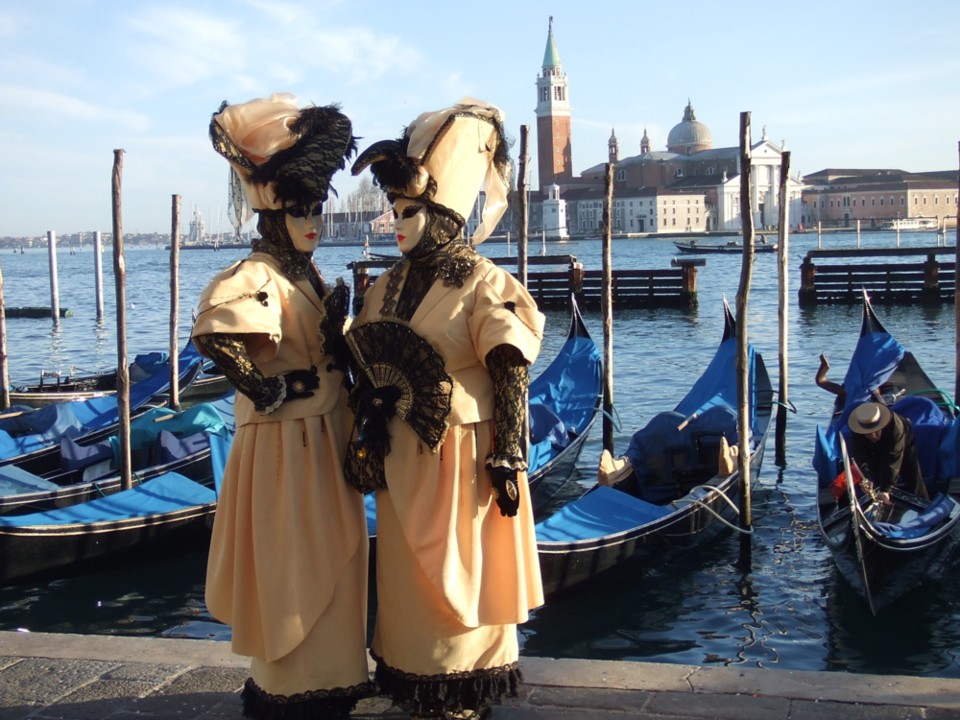
Costumes and masks
If you’ve always had a secret hankering to wear fancy dress, then the Carnival is a perfect opportunity to indulge without attracting stares. Masks, cloaks and wigs are easily purchased at countless tourist shops and souvenir stalls. If you’re looking for something more elaborate or authentic, visit one of Venice’s papier-mâché workshops where good-quality masks are handmade. Costumes can be hired at shops throughout the city, but they may be in short supply if you don’t book them promptly.
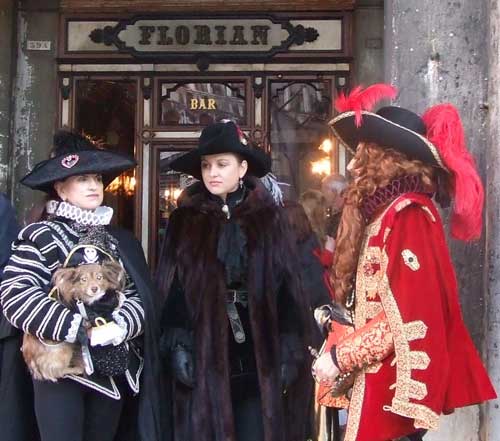
For a one-stop Carnival shop, visit the Mercato delle maschere e dei costumi Veneziani, in Campo Santo Stefano. This little market is made up of stalls from some of Venice’s artisan mask and costume workshops, and runs for the duration of the Carnival.
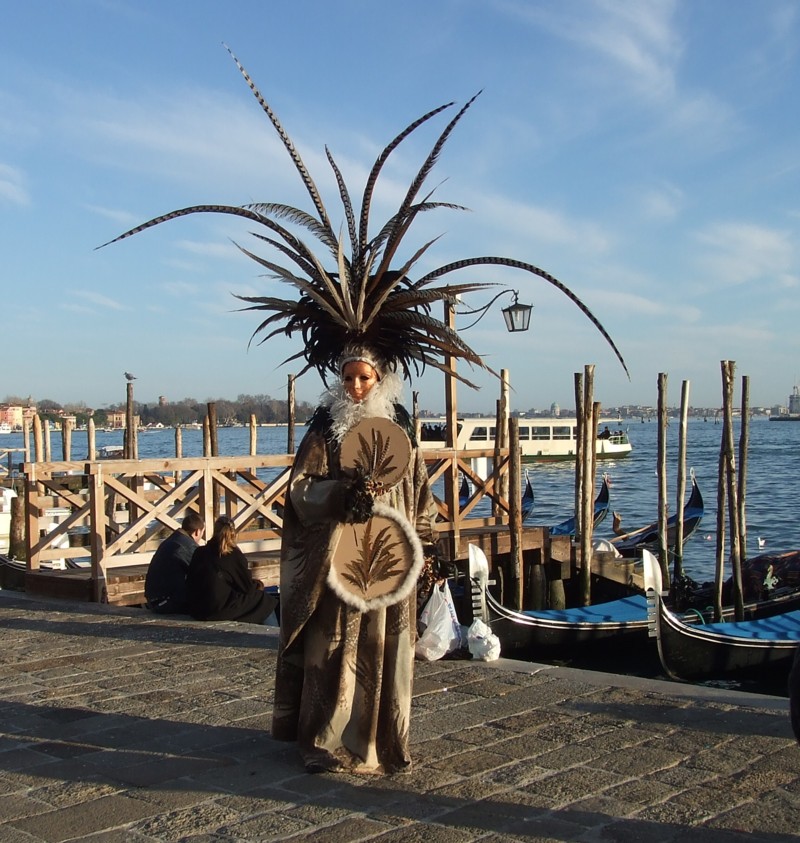
Further afield
If you are really getting into the Carnival spirit, check in local newspapers or at the tourist office for details of other local festivals. They won’t be as glitzy as the main Venice events, but all the local towns celebrate the Carnival in their own way and the more ‘local’ atmosphere may appeal to tourists looking for authenticity. The less touristy areas of Venice are also more typically Italian in their celebrations.
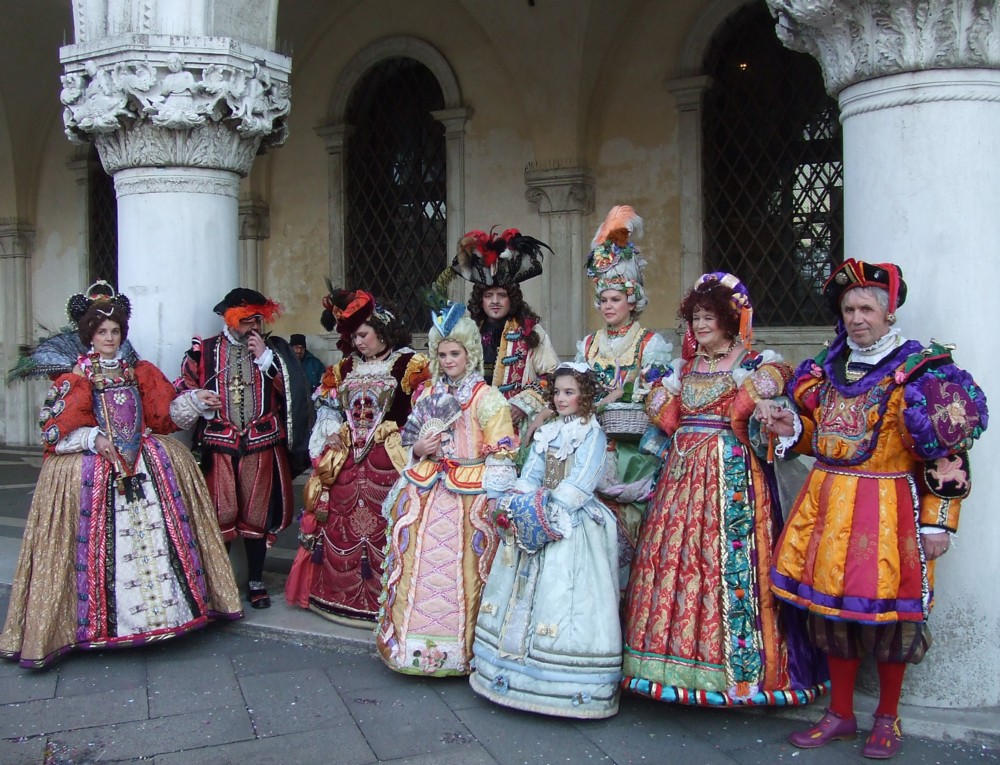
Booking for the Carnival
This is just about Venice’s busiest time of year. Hotel rates are at peak-season levels, and you should book well ahead or find your choices much reduced. St. Mark’s Square can get very busy, particularly during the special events. Venice’s most popular tourist attractions are likely to have queues at this time. It’s still possible to find silent and atmospheric areas – just head off the tourist trail into the quieter residential parts of Cannaregio or Castello.
On this site
Useful external links
